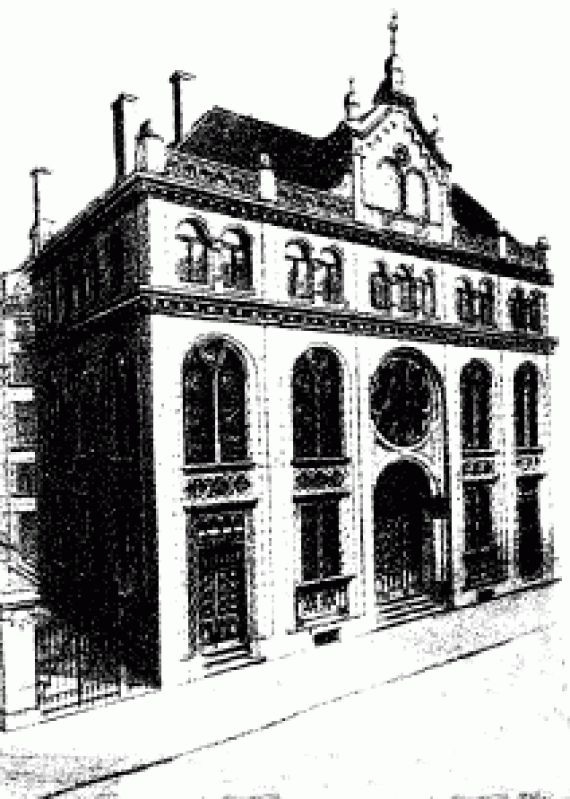Essenweinstraße 7
90443 Nürnberg
Germany
With a letter of July 29, 1874 to the Israelite religious community, 32 members of the congregation asked to hold their own services in the prayer room of the community center according to the traditional rite. However, this was refused, as it was feared that the unity of the congregation would be dissolved. Thus, the first services (since New Year - Rosh Hashanah - 1874) were held in a rented hall. At first, no longer lease agreement was concluded: in December 1874, the fourth prayer room since September of that year was already rented, but this fourth prayer room could at least be rented for an initial year and a half. It was located in the street Am Gräslein. The lease could be extended several times. Even after the Israelite religious community granted the possibility of holding services in the prayer room of the community center, the association did not want to hold services in the community center within earshot of the organ of the main synagogue and remained in the rented prayer room.
Due to the ever-increasing number of worshipers the prayer hall of the association was too small with time, so that from 1899 onwards efforts were made to build their own synagogue. In October of the following year, a plot of land was purchased in Essenweinstraße for the construction of the synagogue. The Nuremberg architectural firm of Ochsenmayer & Wissmüller drew the construction plans for a representative community center. In terms of architecture, the three-story ashlar building with a mansard roof primarily used Neo-Romanesque stylistic elements, with Neo-Gothic elements also used in the tracery parapets.
In annexes of the synagogue in Essenweinstraße were - especially also after the extension by a three-story annex in 1916 - meeting rooms of the association, a library as well as the Jewish elementary school and a Talmud school (cf. report above on the examinations in the Nuremberg yeshiva in 1924).
After the expropriation, closure and subsequent demolition of the main synagogue enforced by the Nazis since July/August 1938, the synagogue of Adas Israel became for a few months the center of Jewish communal life even of the Jewish residents of the city who had previously attended the main synagogue.
During the November pogrom of 1938, Adas Israel s synagogue was desecrated and destroyed. SA men smashed the interior with brutal force. Part of the valuable ritual objects (silver utensils) was taken away. Movable parts of the interior furnishings, books, etc. were thrown in a heap in the area of the bima in the center of the synagogue and finally set on fire. The firefighting crews of the fire department, who were already on the scene and who were also actively involved in the arson, protected mainly the adjacent residential buildings with water fountains. Jewish people, including children, were driven from surrounding houses under beating to the synagogue, where they had to endure the sight of the burning synagogue.

Add new comment